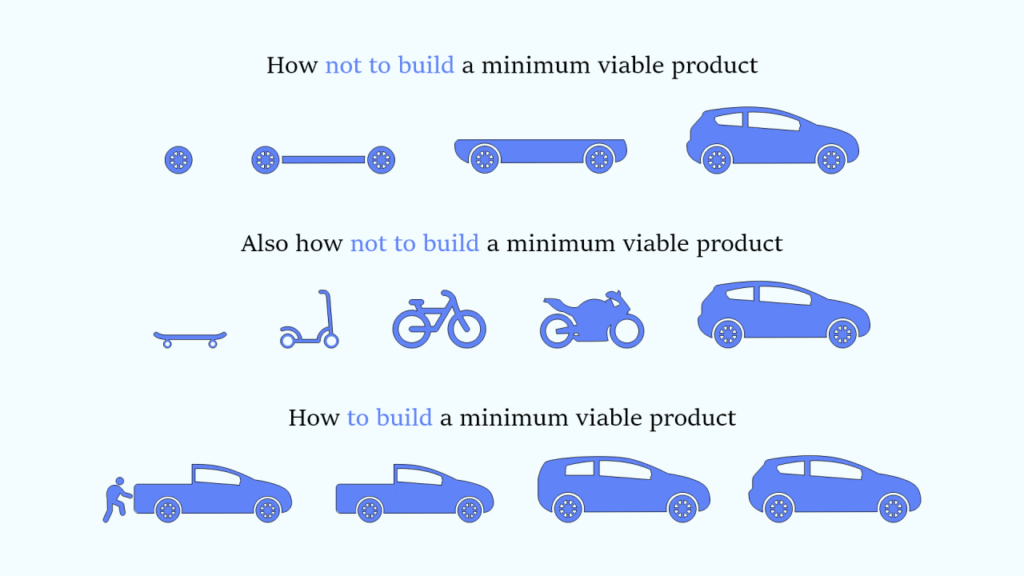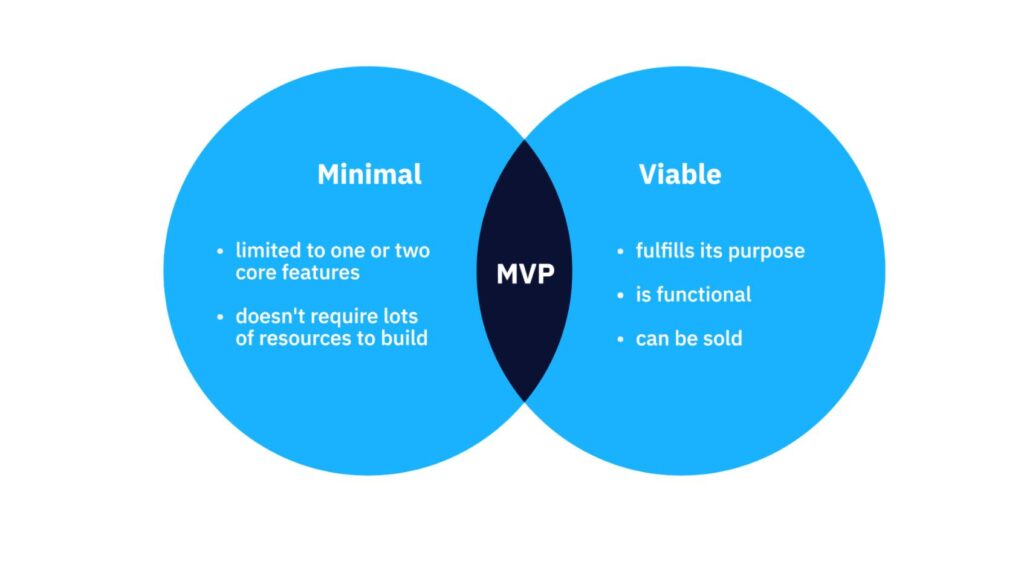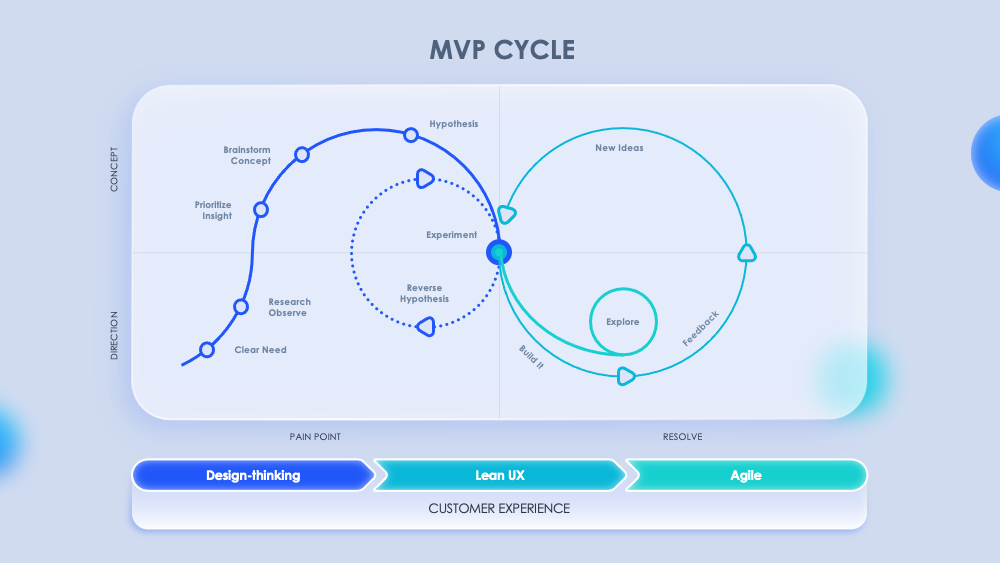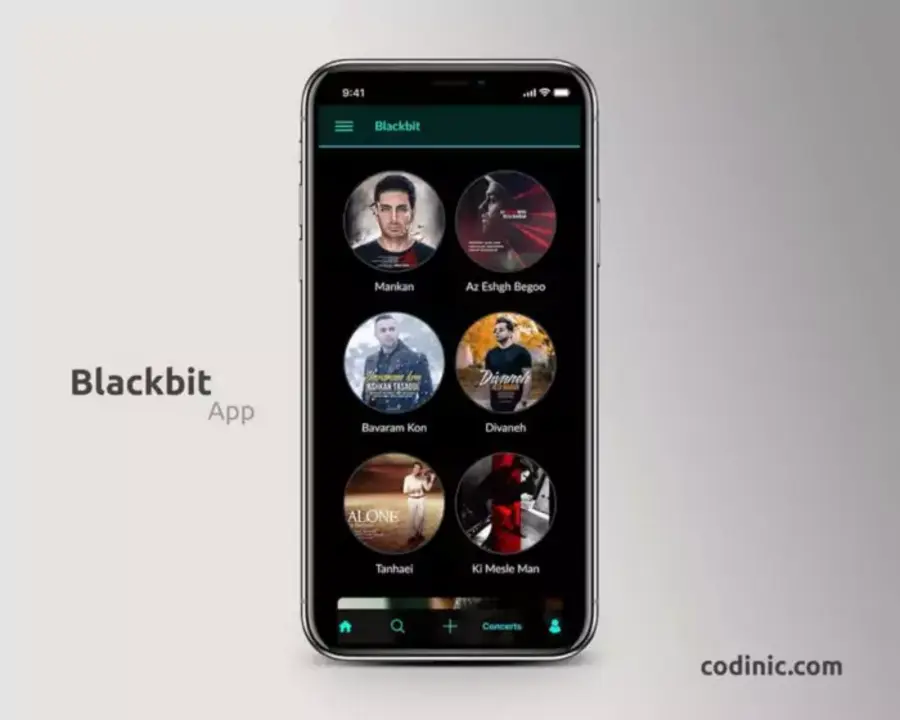What is MVP (Minimum Viable Product)?
MVP (Minimum Viable Product) is simply the most basic and functional version of a product. An MVP is a version that offers value to users and includes basic features. The aim is to bring the product to market as quickly as possible and gather early feedback.

Why do you need an MVP?
- Fast Time to Market: Provides a competitive advantage and the opportunity to test the product earlier.
- Cost Savings: Spending on unnecessary features is avoided.
- Risk Mitigation: You can measure the true potential of your idea before making big investments.
- User-Driven Development: Allows you to improve the product based on real user feedback.
- Market Testing: Helps to understand the product’s position and potential in the market.
Key Features of MVP (Minimum Viable Product)
- Minimalism: It should have only basic features.
- Applicability: It should be a workable product and testable by users.
- Value: It should offer a clear benefit to users.
- Measurability: Measurable goals should be set to determine success.

MVP (Minimum Viable Product) Development Process
We have summarized the MVP development process in 5 stages. You can use this guide to understand this process from idea, definition, prototype to feedback and improvement cycle.

Idea Generation and Target Audience Identification
- Idea Identification: You need to have a good product idea and make sure it fits the target audience.
Market Research and Competitor Analysis: Understand the market conditions by analyzing your competitors. - Market Research and Competitor Analysis: Understand market conditions by analyzing your competitors.
Defining MVP
- Prioritization: Determine which features should be included.
- MVP Matrix: Use a matrix to prioritize features.
Prototyping
- Visualizing Ideas: Turn your initial ideas into a concrete prototype.
- Prototyping Methods: Low-fidelity (drawings, rough designs) and high-fidelity (detailed designs) prototypes.
Testing and Getting Feedback
- User Tests: Test your product with real users.
- A/B Tests: Compare the effectiveness of different versions.
- Analytical Tools: Collect and analyze usage data.
Improvement and Looping
- Feedback-Driven Development: Incorporate feedback from users into the product development process.
Agile Methodologies: Adopt agile approaches.
Advantages of MVP
- Fast Time to Market: Provides competitive advantage and early user feedback.
- Cost Savings: Allows to optimize resources. Allows you to focus on mandatory features first.
- User Driven Development: Enables development based on user feedback.
- Risk Mitigation: Allows you to minimize market risks and take quick action in adverse situations.
- Market Test: Allows you to test the product in real conditions.
- Flexibility: Allows you to quickly transform the product based on user feedback.
Disadvantages of MVP
- Limited Features: May not meet the expectations of some users.
- See Managing User Expectations: Balancing the expectations of users who want more features can be challenging.
- Technical Challenges: There may be a lack of sufficient technical knowledge or infrastructure for MVP development.
- Misunderstanding the Market: If the MVP does not accurately reflect the needs of the target audience, it can lead to misdirection.
- Short Term Focus: Long-term strategies may be neglected.
Tips for a Successful MVP
- Set a Clear Goal: Clarify the starting point of the MVP.
- Focus on Minimum Features: Avoid unnecessary features.
- Set Measurable Metrics: Use concrete metrics to determine success.
- Be Flexible: Improve the product based on user feedback.
- Emphasize Teamwork: Emphasize interdisciplinary work.
MVP Examples and Success Stories
- Technology Sector: Airbnb tested the market by starting with a simple website and has grown into a giant.
- E-commerce: Amazon started by selling only books and diversified based on user feedback.
- Health Sector: Fitness apps prioritized understanding user habits, initially starting with step counting only.
The most important lesson to be learned from successful MVP projects is that the product should be improved by focusing on user feedback.



Pingback: Business Model Canvas - Codinic
Pingback: Agile Metadology - Codinic
Pingback: Venture Strategy Tools - Codinic